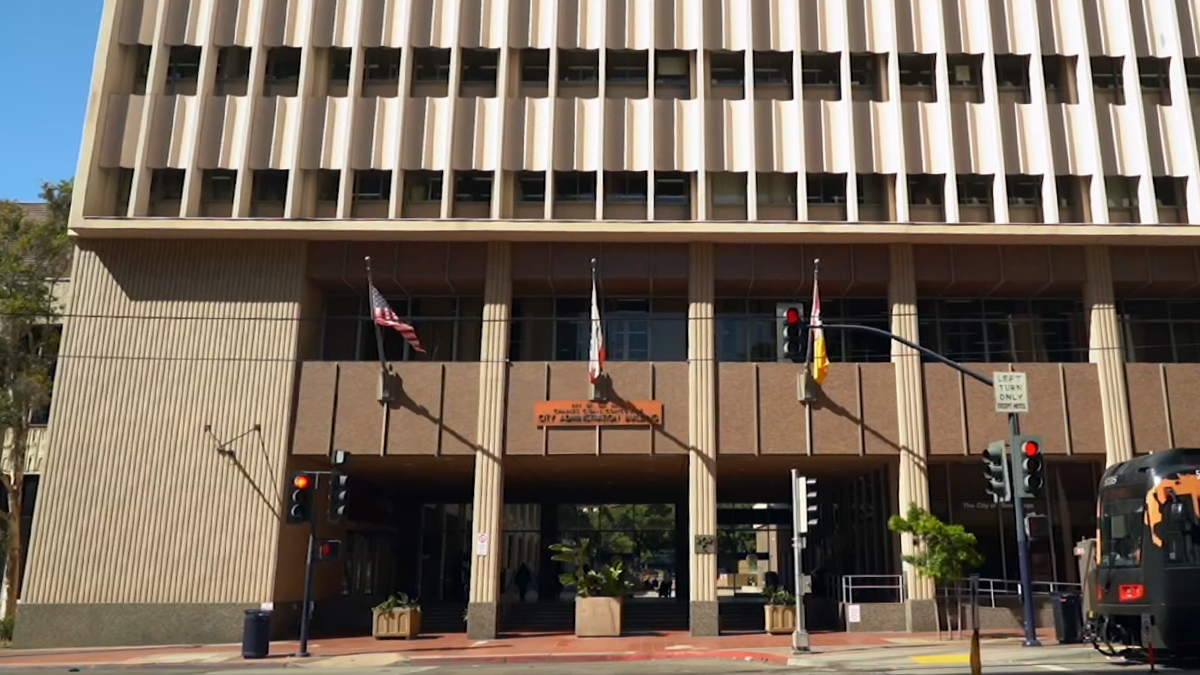One month in and the tent city is still a full house.
Keith Johnson was one of the first residents of San Diego's Safe Sleeping Program. He is also one of the first to leave.
“I was here for two weeks and I got help,” said the 60-year-old former Clairemont resident who already transitioned out of the tent city located on a city of San Diego Operations Yard and into a temporary apartment.
Johnson lost his home when he was hospitalized for surgery. He lived on the streets for two years before his caseworker told him about the Safe Sleeping Program.
Get top local stories in San Diego delivered to you every morning. >Sign up for NBC San Diego's News Headlines newsletter.
“I came off the streets. The streets were very bad for me,” he told reporters. Johnson called his time in the Safe Sleeping Program a “stepping stone for the next step of his life.”
Tina Smith, 55, said her life “spiraled” after she lost her oldest daughter in an arson fire. She returned to San Diego because she was raised here and thought it would be a comfort to be back home. Instead, she found herself homeless, living in the San Diego riverbed near Old Town. Smith told NBC 7 she never felt safe.
“Out there, you have a lot more people that are unstable,” she said. That meant she had to always be on her guard against thieves or people who would do her harm.
Local
Now that she’s living in a tent inside the Safe Sleeping site in Golden Hill, Smith said she has time to think about the future and getting her life together. Smith and the 140 other residents all have case manager referrals, and all are counseled on what’s available to them to improve their lives.
The Safe Sleeping site is run by Dreams for Change, an organization that helps people improve the quality of their lives with the goal of getting homeless people off the streets for good.
“No one wants to stay here forever,” said Dreams for Change CEO Teresa Smith.”
Smith said there’s a misconception out there that some people want to live on the streets.
“You ask these people. They don’t want to be here, almost every one of them would tell you, 'I want a house, a place to live,'” Smith said.
Smith offered reporters a tour of the site where neat rows of camping tents are set up where residents can have their own space. It’s not luxury, but the necessities are all there, food, clean water, port-a-potties, a charging station for cellphones and even a couple of sand lots where pets can take bathroom breaks.
There are 80 people on the waiting list to get in, each must have a caseworker to help them get their lives on track. People with drug problems or mental issues are not accepted to the program which requires residents to sign in when they’re on the property and does not allow visitors. The doors are locked from 10pm until 6am.
Smith told NBC 7 she believes the Safe Sleeping model is one that is sustainable in San Diego, partly because of the mild climate, but also because it’s unique in that it allows family units to stay intact, including family pets.
We wanted to know if San Diego’s Safe Camping Ordinance was impacting shelter demand. Smith said no because the shelter is already at capacity. She did say that interest in the site seems to be growing by word-of-mouth, as people in the program share their experiences.
Smith discounted claims from other cities in San Diego County about homeless moving to their streets.
“They don’t go far because that’s their community, that’s who they know, that’s what they know,” said Smith. “So for someone to say, 'I’m just gonna go down to Chula Vista,' it doesn’t make a lot of sense because they don’t know anyone down there, how they access food, and those basic needs. They’d have to figure that out all over again. They’ll just pack up their tent, move two streets over until the cops come and tell them you have to move and they hop back over two streets.”



